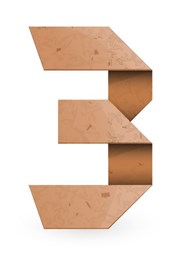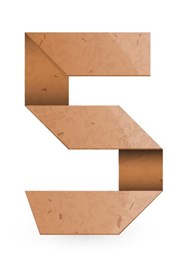By Tom Seymour
Several years of high retail new car registrations have had a knock-on effect for aftersales departments. It means they need to be ready to handle increased numbers of customers all the way from the digital inquiry to the completed repair as smoothly and efficiently as possible.
AM has broken down the essential areas of focus for retailers in their aftersales department with best practice tips from Lookers, Trident Honda, Glyn Hopkin and Pebley Beach.
Service plans
 Service plans are an accepted way of locking in customers to the dealership, often with them introduced during the car-buying process.
Service plans are an accepted way of locking in customers to the dealership, often with them introduced during the car-buying process.
Richard Roberts, Trident Honda managing director and chairman of the National Franchised Dealers Association’s (NFDA) Aftersales Working Group, said 80% of his dealership’s new cars are sold with a service plan.
Roberts incentivises his sales team with £25 for each service plan, to help penetration rates. Trident staff explain the financial benefits involved to each customer. The current offer of £555 for five years’ servicing represents a £795 discount over the period for a petrol vehicle or a £945 saving for the average diesel car.
Iain Nickalls, Edynamix director, said cross-referencing vehicle sales from the dealership management system can highlight any delivered vehicles that have not been presented with a service plan quote. Dealer staff can also sit down with customers and go through a live service plan, altering its length or increasing its mileage.
Customer contact plan
 There needs to be a thought-out plan for customer contact and using technology can help reduce administration and boost bookings.
There needs to be a thought-out plan for customer contact and using technology can help reduce administration and boost bookings.
Debbie Palfreyman, Burrows Motor Company communications team manager, helped to develop Edynamix’s Proactive Follow-up system, and uses it to send customer reminders, control
operator calling lists, record inbound and outbound call information and manage follow-up data. Burrows’ confirmed bookings for servicing rose from an average of 1,443 a month when they started using the system in 2012, to an average of 2,600 a month as of October 2016.
Roberts also uses automated technology to reduce the number of outbound booking calls by using email and SMS messaging.
Trident Honda emails customers 56 days before the service or MOT is due, followed by another email seven days later, and a letter to their home address. Only if none gains a response are calls made. The technique has meant a 95% reduction in outbound calls.
Opening times
 Dealerships are focusing on better customer convenience, extending opening hours and improving flexibility.
Dealerships are focusing on better customer convenience, extending opening hours and improving flexibility.
Glyn Hopkin is trialling longer and more flexible aftersales opening hours at selected dealerships. Its Buckhurst Hill aftersales centre in Essex is now open between 8am and 6pm, six days a week. Two teams of technicians work four days on, three days off.
Paul Sozzi, Glyn Hopkin aftersales director, said: “By providing more convenient hours for working people, we are seeing an uplift in booking volumes at the start and end of the day.”
At Lookers, Gavin Ruddick, aftersales director, said its trial of extended hours earned positive customer response for earlier opening and later closing in larger conurbations.
Lookers trialled overnight and 24-hour shifts in some aftersales departments, but Ruddick said these were superseded by longer opening times.
He said: “The productivity in the early hours was poor and there was very little true customer demand for it. Many of our customers seek to have their vehicles serviced and repaired throughout the normal working week,” which allows them to minimise the impact on their own free time.
Ruddick said a seven-day working week was under “serious consideration” for the future.
Online booking
 Lookers simplified its online booking process after monitoring how customers used it. It has a dedicated customer portal linked to workshop capacity.
Lookers simplified its online booking process after monitoring how customers used it. It has a dedicated customer portal linked to workshop capacity.
Ruddick said: “This allowed our customers to choose their booking, through pre-populated information we knew about them from the DMS. It cut the booking time down to 30 seconds.”
The group has seen a 30% increase in online bookings as a result of simplifying the process.
Ruddick expects the process for the customer to be simplified further, while becoming more sophisticated at the back end. Manufacturers’ launch of real-time telematics technology means cars will be able to send dealerships detailed diagnostic data, providing an accurate assessment of what is required ahead of coming into the workshop.
Glyn Hopkin receives about 150 online bookings a month, making up 10% of its aftersales volumes. Most of these bookings are made outside regular working hours, usually on weekday evenings. The low level of online bookings suggests that some customers still want to confirm their booking over the phone.
Sozzi said: “Despite the increasing popularity of online booking, we find the majority of customers still prefer to contact our dealerships by phone or in person, highlighting the value of knowledgeable and helpful sales and aftersales teams.”
Collection and delivery
 Collection and delivery has become something busy customers expect.
Collection and delivery has become something busy customers expect.
Between 65% and 75% of Trident’s customers choose collection and delivery. The cost of staffing the service is high, and may not be fully absorbed by customers’ service plans, said Roberts, but Trident sees a need to provide that for convenience.
Pebley Beach Group does it slightly differently. It gives most service customers a lift back to work or home. If the customer cannot get a lift back to the dealership, it will pick them up again.
Dom Threlfall, managing director, said: “We’ve invested a lot in these facilities and as an industry we risk moving to the point with collection and delivery where the customer will never come to the showroom and see anyone face to face.”
While-you-wait servicing
 The increased costs involved with collection and delivery or loan cars can be negated by while-you-wait servicing.
The increased costs involved with collection and delivery or loan cars can be negated by while-you-wait servicing.
Lookers’ research of 2,000 people showed 88% would prefer to wait for servicing if they knew they could be on their way within 60 minutes.
Ruddick said: “By increasing the amount of while-you-wait customers, you’re providing what customers want and solving other problems in the process. You’re increasing throughput, reducing the costs involved with courtesy cars, collection and delivery and you’re improving customer satisfaction.”
Ruddick said Lookers’ workshops each get 24 aftersales customers a day on average, of which 10 are while-you-wait.
Lookers is trialling multi-technician servicing across most of its franchises with teams of up to three per vehicle. Ruddick said: “The initial results are positive and has allowed for a significant increase in the efficiency and capacity of service teams. This work continues as we look into the physical capacity of our ramps/workshop, rather than simply looking at the capacity of technician resource.”
Some 5-10% of Trident customers currently use while-you-wait servicing. Roberts said: “It is something we have offered for a long time, as have other dealers. However, the results from the NFDA consumer survey report show that we may not be getting that message out there to customers as an industry.”
The NFDA survey found just 4% of consumers see servicing while-you-wait as convenient, but 82% are open to the idea. It found they will wait for 1 hour 14 minutes on average for the service, vehicle health check and wash.
Threlfall said while-you-wait servicing can be tricky, because if other work is identified, it can lengthen the amount of time the vehicle is in the workshop.
He said: “The key is to manage expectations and make sure everything that is happening is communicated.”
Roberts said he hopes to boost while-you-wait numbers by making sure the service team offers it as an option at the time of booking: “The quality of the work is not compromised as we ensure with while-you-waits the customer has a booked time slot, and we have allowed the time required for that job. If further work is found, this is rebooked at a later time unless the customer is happy to wait.”
Vehicle health checks (VHC)
 Threlfall said: “Consistency is really important with VHC. We call it the Starbucks approach. If you get a vanilla latte at one Starbucks, it will be exactly the same as at any other. I don’t want customers coming in and seeing red work that has been identified suddenly turning amber when they’re back the next time.”
Threlfall said: “Consistency is really important with VHC. We call it the Starbucks approach. If you get a vanilla latte at one Starbucks, it will be exactly the same as at any other. I don’t want customers coming in and seeing red work that has been identified suddenly turning amber when they’re back the next time.”
Many dealers use electronic health check systems to streamline processes. Lookers uses vehicle health checks and sends out vehicle video updates to help demonstrate amber and red work to customers. Aftersales staff follow dedicated franchise VHC guides to ensure consistency.
Ruddick said: “Where customers have service plans in place to cover routine maintenance, they are much more willing to commit to red work that has been highlighted in a VHC.”
Trident tasks the service team to health check every vehicle.
Roberts said: “It enables us to offer other required works to our customers and reassures them that their car has been checked fully for all safety-related items.”
Updates and reminders
 Using Trident’s DMS, the showroom can email customers a link to a website on which they can track a vehicle’s progress through the workshop. Pebley Beach uses a similar system, which Threlfall described as a bit like “Domino’s track my pizza”.
Using Trident’s DMS, the showroom can email customers a link to a website on which they can track a vehicle’s progress through the workshop. Pebley Beach uses a similar system, which Threlfall described as a bit like “Domino’s track my pizza”.
Roberts said: “This helps the customer to know what stage their vehicle has reached, as well as reducing the telephone calls through our reception team.”
Pebley Beach also uses a software package that can automatically text customers when their car is ready.
While the SMS service is convenient for most, Threlfall said: “Communicate in the way the customer wants. If they have specifically asked for a call, then call.”
Added extras
 Roberts said: “When a customer brings their car in for service, it is a little bit of a distress purchase – the inclusion of a free wash and vac does take away from this pain. It is a service we have carried out for many years and is always appreciated by our customers.”
Roberts said: “When a customer brings their car in for service, it is a little bit of a distress purchase – the inclusion of a free wash and vac does take away from this pain. It is a service we have carried out for many years and is always appreciated by our customers.”
Pebley uses automatic number plate recognition technology (ANPR), which is linked to the dealership’s DMS to inform the front desk of the name and details for the customer about to come through the door. The front door of the dealership also has a digital screen that will display a welcome message with their name.
Pebley is also known for using masking tape to mark the position customers prefer their seat in.
Threlfall said: “I like to introduce little changes each month to keep things fresh. We’ve recently put a bell in the middle of the showroom and we ask customers to ring it if they have received great customer service.
“It’s a bit of fun and it turns heads from everyone else in the showroom in the sales department who are asking what it’s all about, and it’s refreshing that it’s about customer service, not sales.”














Login to comment
Comments
No comments have been made yet.